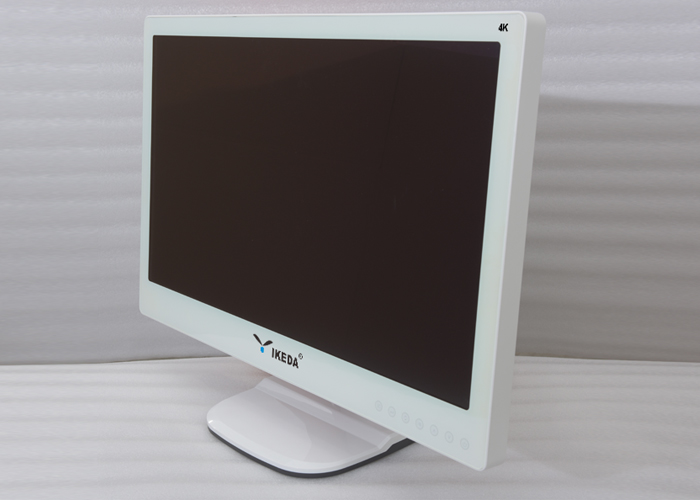Compared with ordinary displays, medical displays have higher maximum brightness, higher contrast, higher resolution, and support higher-bit (10-bit to 12-bit) grayscale display. More importantly, medical displays have stability and consistency that are difficult to achieve with ordinary displays.
Stability mainly refers to that the brightness of the medical display can be stably maintained at the ideal reading brightness value (generally between 400 and 500 cd/m2). Even if the LCD panel ages and the brightness decreases over time, the medical display can adjust the brightness to the original ideal value.
Consistency means that in the medical digital imaging system, whether it is on the display of the image acquisition equipment (CR machine, DR machine, CT machine, etc.), or on the display used by the outpatient doctor, all medical images must be visualized Consistency, that is, the display effect of each display is consistent, which is very important for doctors to make a correct diagnosis, because inconsistent medical images will bring inconsistent, unreliable or wrong diagnosis.

The function of the corrector is to ensure that the display maintains an ideal brightness level in all lighting environments, and can automatically adjust the screen brightness according to changes in the surrounding brightness. Its brightness compensation function can ensure that the brightness of the medical display enters a stable state in the shortest time when the medical display is started, and at the same time detects and compensates for the LCD background brightness, the temperature of the lamp and the change of the ambient temperature. Let's understand what are the calibration methods of medical displays?
Correction method of medical display
In practical applications, medical displays need to use a luminance meter and corresponding programs to measure and calibrate the luminance to make it meet the DICOM requirements. The common ones are manual correction of external luminance meter and automatic correction of built-in luminance meter.
External brightness meter manual calibration
During calibration, the luminance meter is placed in front of the display, and the display displays various test pictures. The luminance meter measures the luminance values of specific positions in these test pictures, and then uses special luminance correction software to correct the luminance of the display.
One of the great advantages of manual calibration of the external luminance meter is intuitive, because the luminance meter is placed in front of the display screen, the luminance measured by the luminance meter is the luminance seen by the human eye, and no other calculations are required for conversion. The disadvantage of the manual calibration of the external luminance meter is that it needs to be operated manually by professionals with certain skills, and the requirements for personnel are relatively high; the display needs to be calibrated every certain time (3 to 6 months), which requires a large amount of work and It is possible to miss the calibration time; the brightness meter measures the light in a very small area of the screen, and the lighting area is small. Since the brightness of the screen is not completely uniform, the measured brightness cannot represent the brightness level of the entire screen.
Built-in luminance meter automatic correction
The built-in luminance meter is installed at the back of the liquid crystal panel, and receives the backlight emitted by the backlight from the light-transmitting hole, measures the luminance of the backlight, and completes the correction by the corrector control circuit.
The built-in luminance meter automatic calibration mainly uses Intelli-GuardTM optical sensing technology to achieve the calibration of medical displays.
The Intelli-GuardTM system is a sophisticated control system that automatically detects brightness and temperature, which effectively solves the problem of regular testing and recalibration of traditional medical displays. The built-in processor Smart Controller of the display can store Dicom correction results, and intelligently correct and compensate the brightness output of the display according to the correction results. Intelli-GuardTM controls the stability of the brightness output of the LCD panel by automatically adjusting the backlight drive, so that the daily working brightness is constant at the calibrated standard brightness. Intelli-GuardTM's stable control function compensates for the drop in light transmittance caused by the temperature rise and fall of the LCD panel, ensuring that the display brightness is constantly maintained within the calibrated brightness range when various environmental temperature fluctuations. Intelli-GuardTM automatically controls the backlight drive circuit, which greatly shortens the time for professional high-resolution displays to reach a stable brightness state, from the past few minutes to the current less than ten seconds.
The advantages of the built-in brightness meter automatic calibration are: no manual intervention is required, the display is automatically completed, saving the labor of professionals, and avoiding errors that may be caused by manual operation; automatically monitoring the brightness changes of the display and automatically adjusting, so that the display is Maintain stable brightness throughout the service life; what is measured is the brightness of the backlight, that is, the overall brightness of the display, which can accurately represent the overall level of the display. The built-in brightness meter automatic calibration also has its shortcomings: the measured brightness is the brightness of the backlight, not the brightness that the human eye feels after the backlight passes through the liquid crystal surface.